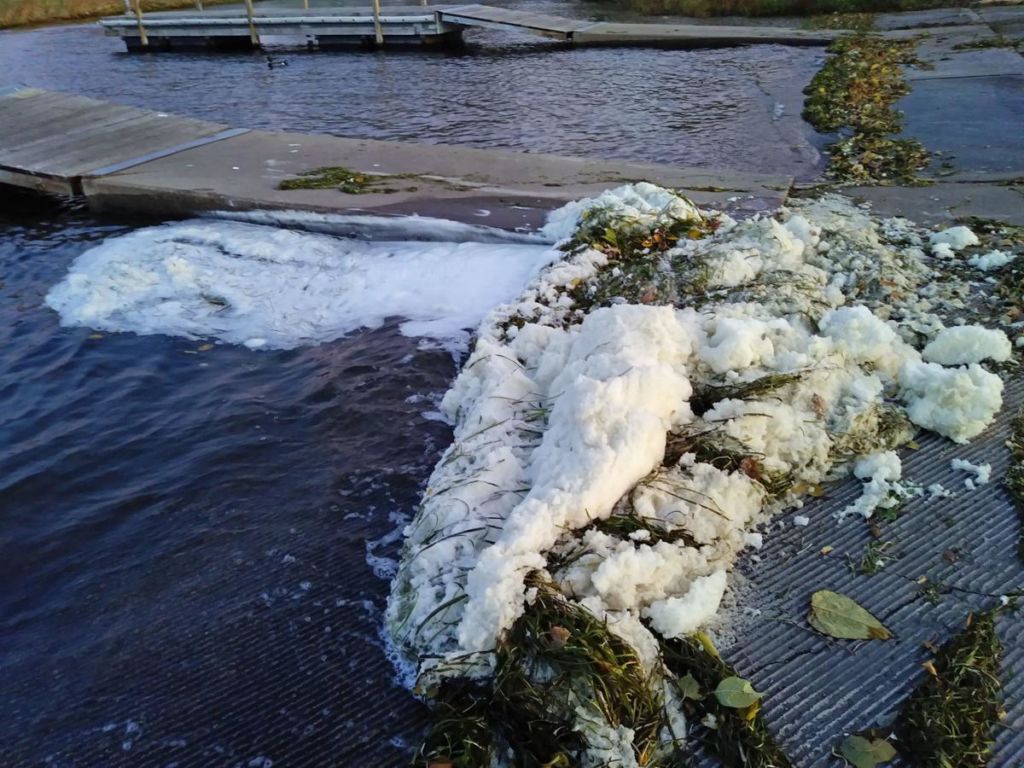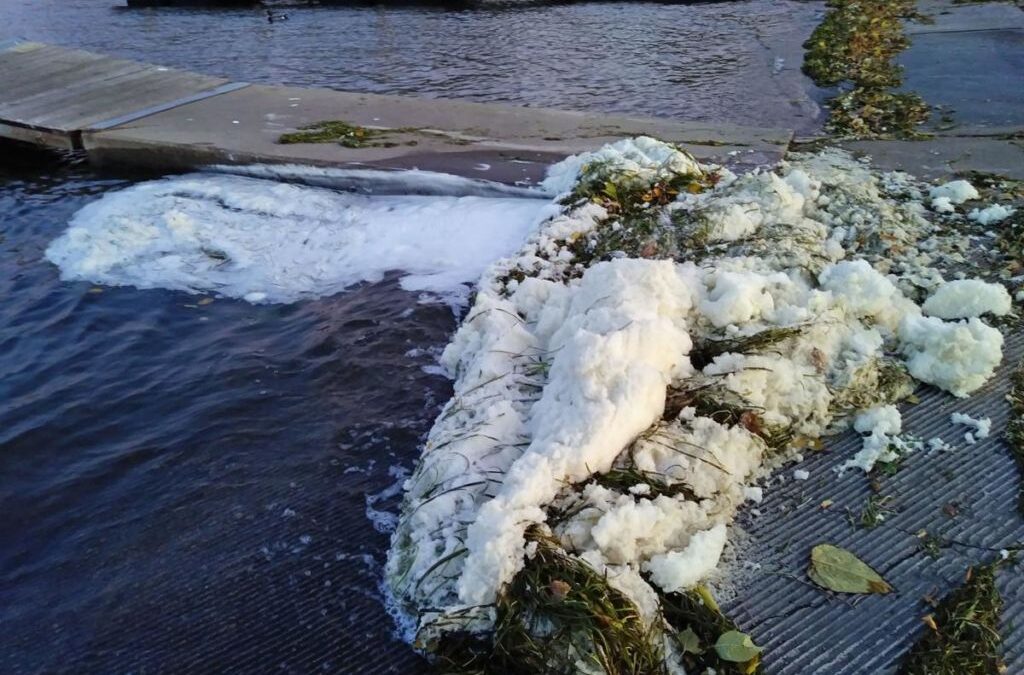 CSWAB submitted the following comments at the inaugural meeting the Wisconsin DNR PFAS External Advisory Group this week. CSWAB recently accepted an invitation from WDNR Secretary Preston Cole to serve on newly-formed advisory panel. Executive DIrector Laura Olah is our representative.
CSWAB submitted the following comments at the inaugural meeting the Wisconsin DNR PFAS External Advisory Group this week. CSWAB recently accepted an invitation from WDNR Secretary Preston Cole to serve on newly-formed advisory panel. Executive DIrector Laura Olah is our representative.
CSWAB Comments Opposing a Proposed Exemption of 10:2 FTS, PFHxDA, and PFODA from Wisconsin DNR’s Default PFAS List for Testing and Laboratory Certification
Retaining 10:2 FTS
A recent scientific study in Norway, published in Dec 2020, analyzed sediment contamination from paper product production. Sediment samples from the creek downstream of the factory landfill were “dominated by 8:2 FTS and 10:2 FTS”.
Closer to home, PFAS sampling by the WDNR at Starkweather Creek in Madison (WI) detected 10:2 FTS in FOAM. The collected samples were taken near the boat landing adjacent to Olbrich Park, where Starkweather Creek enters Lake Monona (see photo).
10:2 FTS (as found in AFFF firefighting foam) is persistent under the anaerobic conditions of landfills and are very poorly removed during municipal waste treatment. And as a precursor, it should be retained to be consistent with the current WDOH Health Advisory Level for PFOA/PFOS which is inclusive of four precursors.
Retaining PFHxDA and PFODA
One reason to consider retaining PFHxDA on the monitoring panel is that it is detected in municipal landfill leachate which suggests it may be in wide circulation.
In addition to leachate, a 2019 study by Purdue University of compost consistently found PFHxDA at the highest concentrations relative to other tested PFAS in both (1) municipal waste composts and (2) commercially available biosolids-based fertilizers.
Following are examples of three U.S. sites that sampled for PFHxDA and/or PFODA.
At Wurtsmith Air Force Base in Michigan, the State tested four private drinking water wells. Of the four wells tested, PFHxDA was detected in two wells and PFODA was detected in a third well. So, three of the four private wells tested had either PFHxDA or PFODA.
At Grayling Air Force Base in Michigan both (PFHxDA and PFODA) were included in their groundwater and drinking water analysis.
At Saint-Gobain Performance Plastics in New Hampshire, PFHxDA has been detected in impacted sediments.
Sites with 10:2 FTS, PFHxDA and PFODA
We don’t have to look very far to find an example of a site where ALL three of these PFAS chemicals are present. At least two different kinds of firefighting foams (Phos-check and Fire Ade AFFF) were deployed at the ATC Transformer Fire on Lake Monona in 2019.
10:2 FTS was detected in both of these foams. Low concentrations of PFODA and PFHxDA were detected in several soil samples. So, all three are present at the ATC site, which is especially important to know in terms of firefighter exposures.
Summary
The three PFAS proposed for exemption from the State’s Default Laboratory Certification and Sampling List have been detected in landfill leachate, fresh water sediments, firefighting foams, biosolids, certain composts, groundwater and drinking water.
Wisconsin is just at the starting line when it comes to PFAS. Initial site assessments are the time to cast our nets wide. The sensible basis to winnow down the monitoring analyte list is confirmation of its absence through a series of samples and on a site-specific basis – not at the outset.
Today, state health officials explained the significance of risk from exposure to a mixture of PFAS chemicals. To accurately assess the degree of risk, we need to collect data for ALL detectable PFAS, not most of them.
We also cannot discount low concentrations of PFAS in the environment as these persistent chemicals are known to bioconcentrate in animals and people. Concentrations of certain PFAS in fish tissue can be as much as 7,000 times higher than the water that surrounds them.
Last, in preparation for this meeting, I reached out to people from communities that have been impacted by PFAS contamination – asking if these three chemicals have been detected in their drinking water. One response in particular really hit home: “I don’t know if these chemicals are in my water because they are not testing for them.”
We have the ability to detect these chemicals and people have the right to know if they are present in their water and in their environment.
For all these reasons, we oppose the proposed exemptions.
REFERENCES:
ATC Transformer Fire PFAS Foam Soils Report 10 Dec 2020
CSWAB Comments PFAS External Advisory Group Retaining 3 PFAS 23 Feb 2021 (printable .pdf)
IC2 PFAS Econ NEWMOA Webinar 2 June 2018
Landfill Leachate National Estimate of PFAS Lang July 2019
Mixture exposure to PFAS A Relative Potency Factor approach Zeilmaker 2018
New Hampshire Report 2 Legacy PFAS Char Soil Freise PFHxDA July 24 2018
Paper Products Source PFAS 10_2 FTS Langberg 2021
PFAS Fate and Transport Powerpoint GZA GeoEnvironmental 2019
Presentations Impact of PFAS on Solid Waste Operations EBC 2019
Starkweather Creek PFAS Results Foam FTS PFHxDA PFODA Madison WI 2019
Wisconsin Health Services PFAS Hazard Index Letter 17 Nov 2020
Wurstmith Air Force Base Michigan Dept Health Final Community Mtg Oct 2016

